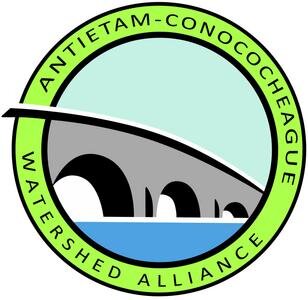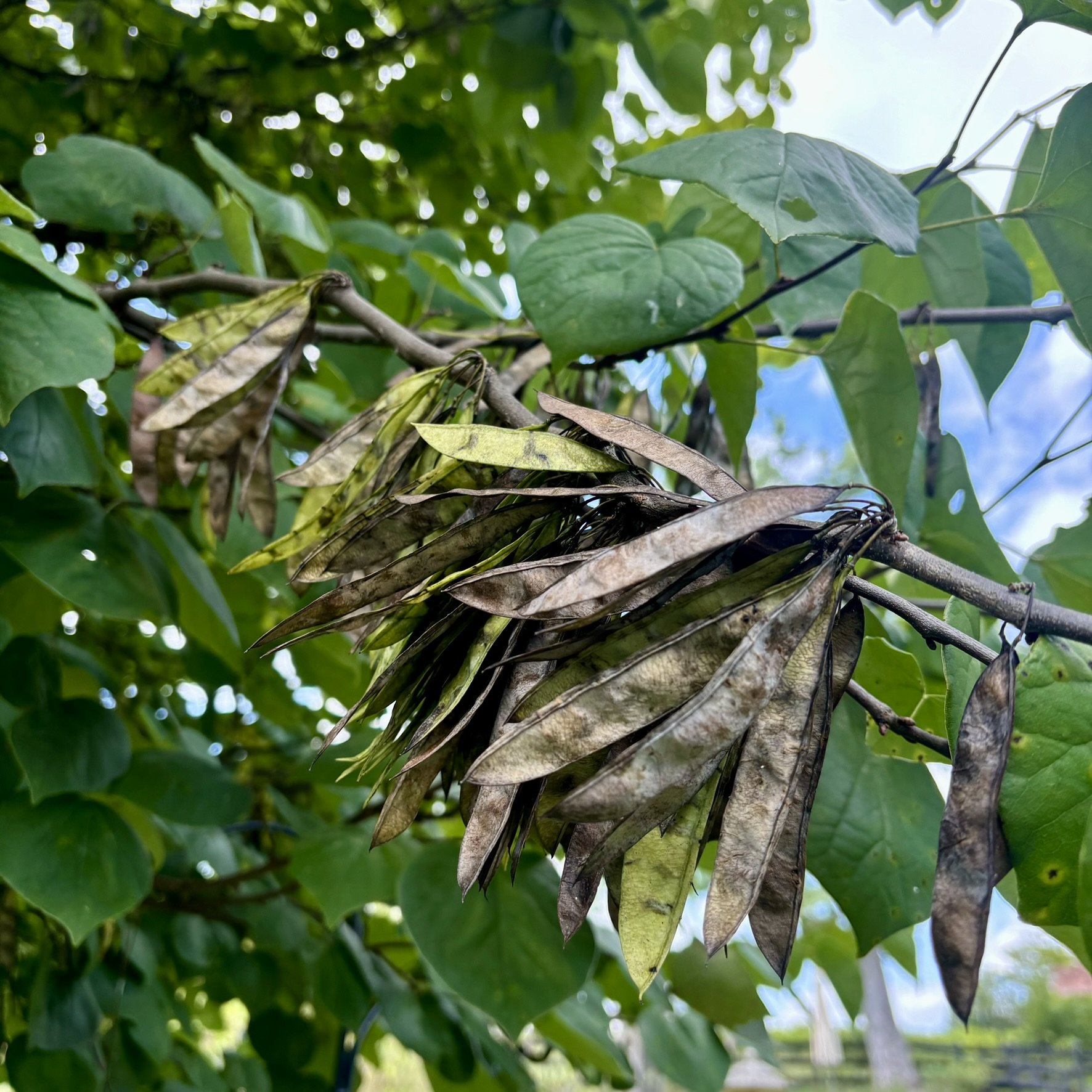How to collect Eastern Redbud seeds for nursery donations
As part of Maryland’s 5 Million Tree Initiative, the Maryland Forest Service is collecting seeds & acorns from 15 priority native plant species to grow into seedlings for future tree plantings. One of the 15 is the Eastern Redbud, Cercis canadensis, which is easy to identify, readily available in our watershed, and good for beginners to collect independently.
How to identify an Eastern Redbud Tree (Source: Plant ID & Seed Collection Workshop Booklet):
Form: A large shrub or small tree up to 30 feet with a short, often twisted trunk and spreading branches.
Leaf: Alternate, simple, cordate in shape, 3 to 5 inches long and wide, with an entire margin, thin and papery, petioles conspicuously swollen on both ends; green above and slightly paler below.
Flower: Very showy, pea-like, pink to light purple in color, 1/2 inch long, appearing in clusters all along even older stems in early spring before the leaves.
Fruit: Flattened, dry legumes, brown, 2 to 4 inches long that contain flat, elliptical, brown seeds 1/4 inch long, maturing in late summer.
Twig: Slender and zigzag, nearly black in color, spotted with lighter lenticels, leaf buds are tiny and dark red to chestnut in color; flowers buds are round and often numerous in large clusters on older woody stems.
Bark: Initially smooth and brown; later ridged and furrowed to scaly and dark gray; may have some maroon patches evident and orange in the cracks.
Also Looks like: honeylocust - western redbud - Chinese redbud
Eastern Redbud Seed Collection:
Eastern Redbud is a common species that is often planted along roadsides and in park settings. You will also find redbud in natural settings like forest edges and understories. Redbud prefers dry sites, and you will likely not find it occurring naturally in riparian areas or wetlands. Eastern redbud is in the legume family, and seed is inside of a flat legume that is 2 to 4 inches in length. Redbud seed pods resemble a snow pea.
Collect the dried brown seed pods directly from the trees, or collect fallen seed from the ground. Do not collect fresh/green pods.
The tiny seeds in a redbud seed legume, an indication that the tree was pollinated so seeds would develop.
Tip: Eastern Redbud trees will still produce seed pods even if they are not pollinated. If the redbud flowers were not pollinated before creating pods, there will be no viable seed inside. Before collecting pods from a redbud tree, inspect 5-10 pods from different parts of the tree. You can crack open the seed pods to see if the seed is present and fully formed. If most of the initial pods you inspect are hollow, do not collect from that tree.
Store eastern redbud seed pods in a loosely woven cloth bag to allow for airflow. Small paper lunch bags are also acceptable. Store in a cool, dark place like a garage or barn. Eastern redbud seed pods have a bit longer of a “shelf-life” than other seeds such as acorns and fruits.
Drop off collected seeds with ACWA or MDDNR at designated locations and times. Find locations during following times:
September 6-11, 2024 in Williamsport and Hagerstown. See details HERE
Other drop locations will be scheduled and updated in this blog post and ACWA’s calendar.



